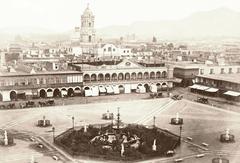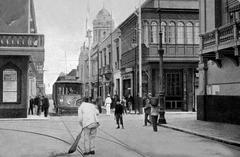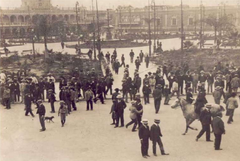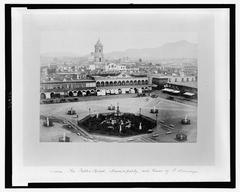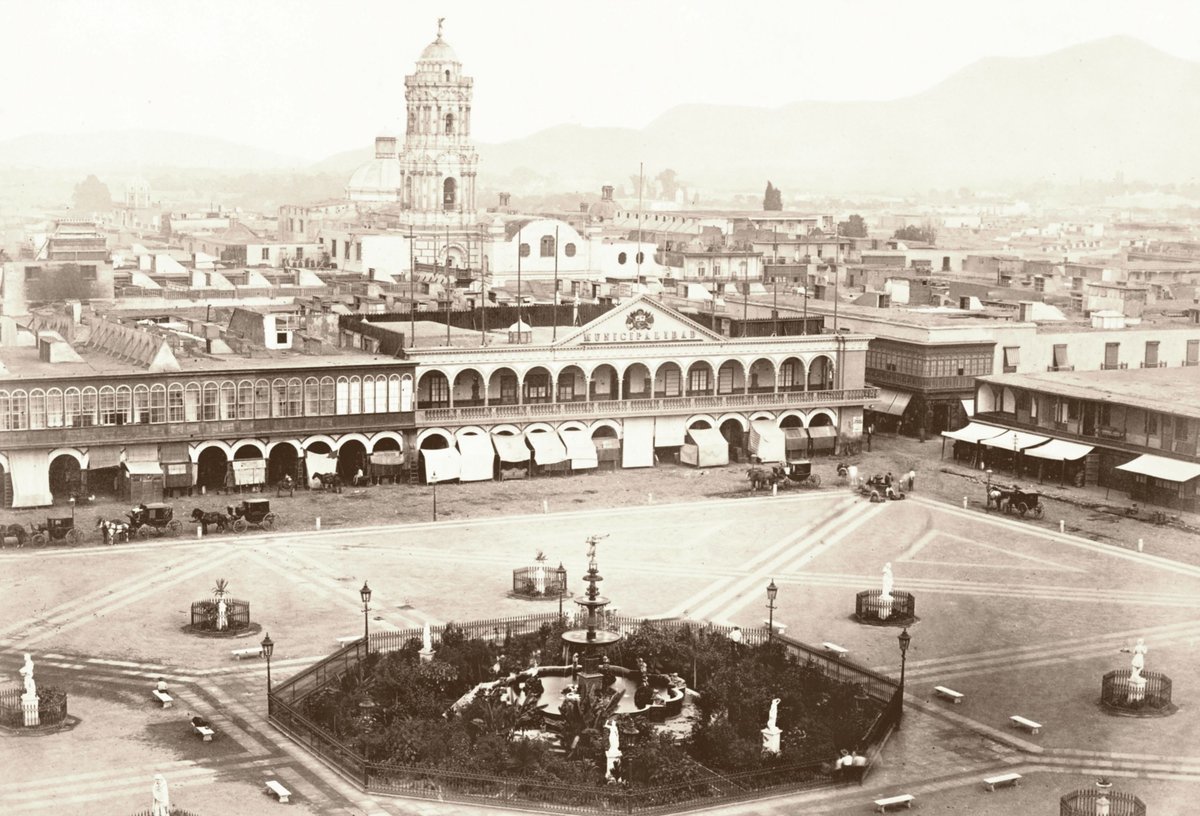
Casa Alcántara: Visiting Hours, Tickets, and Historical Sites in Lima, Peru
Date: 15/06/2025
Introduction
Casa Alcántara, once a cornerstone of Lima’s colonial heritage, exemplified the city’s architectural and social evolution from the 16th century to the modern era. Although the mansion was demolished in 1952, its legacy endures at Plaza Perú in the heart of Lima’s UNESCO-listed historic center. This guide offers a comprehensive overview of Casa Alcántara’s history, visitor information for its historic site, practical travel tips, and recommendations for exploring nearby attractions. Whether you are a history enthusiast, architecture admirer, or cultural traveler, this article will help you connect with the rich tapestry of Lima’s past and present (LimaEasy; Wikipedia: Casa Alcántara).
Table of Contents
- History and Significance of Casa Alcántara
- Architectural Features and Urban Evolution
- The Site Today: Plaza Perú
- Nearby Historical Attractions
- Visitor Tips: Safety, Accessibility, and Best Times to Visit
- Cultural Etiquette and Practical Advice
- Frequently Asked Questions (FAQ)
- Conclusion
- References
1. History and Significance of Casa Alcántara
Casa Alcántara originated in the early colonial period, soon after Lima’s founding by Francisco Pizarro in 1535. Owned by Francisco Martín de Alcántara, Pizarro’s half-brother, the mansion quickly became a symbol of elite status due to its proximity to the Plaza Mayor, Government Palace, and key religious institutions (Wikipedia: Casa Alcántara; Discover Walks). The Alcántara family’s prominence in local governance and society was reflected in the mansion’s grand design and strategic location.
Over the centuries, Casa Alcántara was both a private residence and later, through inheritance, a property of a major religious order, demonstrating the interconnectedness of political, economic, and clerical power in colonial Lima (Wikipedia: Casa Alcántara).
2. Architectural Features and Urban Evolution
Casa Alcántara was renowned for its Spanish Baroque and Moorish-inspired architecture, with hallmark elements such as:
- Intricately carved wooden balconies (balcones de cajón)
- Spacious central courtyards designed for Lima’s coastal climate
- Thick adobe walls for seismic resistance
- Barred windows and ornate facades painted in distinctive hues (LimaEasy; Free Walking Tours Peru)
By the 19th century, the mansion’s ground floor was adapted for commercial use, illustrating Lima’s evolving urban landscape. Repeated earthquakes prompted several reconstructions, underlining both the resilience and vulnerability of Lima’s colonial architecture.
In 1952, the Peruvian government demolished Casa Alcántara to make way for Plaza Perú (formerly Plaza Pizarro), reflecting the mid-20th-century drive toward modernization at the expense of historical preservation (Plaza Perú - Lima Wikipedia).
3. The Site Today: Plaza Perú
Visiting Hours and Accessibility
Plaza Perú, occupying the former site of Casa Alcántara, is a vibrant public square open 24 hours a day, year-round, with no admission fee. The square is easily accessible on foot from major landmarks such as the Government Palace and Lima Cathedral, and is well served by public transportation and pedestrian pathways (UNESCO World Heritage Site: Lima).
Tickets and Guided Tours
While Casa Alcántara cannot be visited as a structure, its story is featured on many guided tours of Lima’s historic center. These tours often include nearby colonial mansions like Casa de Aliaga and Torre Tagle Palace, which are open to the public and provide a similar experience of Lima’s aristocratic past. Ticket prices for guided tours of these mansions typically range from PEN 30–80 (approximately $9–$22 USD). Advance booking is recommended, especially in high season (thenandnows.com; misstourist.com).
4. Nearby Historical Attractions
Within Lima’s historic center, notable colonial sites include:
- Casa de Aliaga: The oldest continuously inhabited colonial mansion in Lima, open for guided tours (Casa de Aliaga Official Site).
- Torre Tagle Palace: Known for its ornate Moorish balconies and baroque details.
- Casa de Osambela: Celebrated for its grand staircase and elegant salons.
- Archbishop’s Palace of Lima: A landmark of religious and architectural significance.
These sites, along with Plaza Mayor and the Basilica and Convent of San Francisco, offer a comprehensive immersion into Lima’s colonial history (LimaEasy; UNESCO).
5. Visitor Tips: Safety, Accessibility, and Best Times to Visit
Safety and Security
- The historic center is generally safe during daytime hours, but petty theft can occur. Keep valuables secure, use anti-theft bags, and avoid isolated streets after dark (Travellers Worldwide).
- Use authorized taxis or rideshare apps; avoid unmarked taxis.
- Stay informed about local advisories, especially during civil demonstrations.
Accessibility
- The historic area includes cobblestone streets and uneven surfaces; comfortable footwear is recommended.
- Some colonial buildings have limited wheelchair access due to historic architecture. Contact specific sites in advance for accessibility information.
Best Times to Visit
- Dry season (December–April): Pleasant weather and fewer crowds.
- Weekdays: Quieter experience at major sites.
- Winter months (May–November): Prioritize indoor activities due to overcast skies (In Lovely Blue).
6. Cultural Etiquette and Practical Advice
- Language: Spanish is predominant; basic Spanish phrases enhance interactions (Lonely Planet).
- Dress Code: Dress in layers; bring a light jacket, especially for cool mornings and evenings.
- Photography: Always ask permission before photographing people or inside historic homes.
- Cash: Carry small denominations of Peruvian Nuevo Sol (PEN); many vendors do not accept cards (HikersBay).
7. Frequently Asked Questions (FAQ)
Q: Can I visit the original Casa Alcántara?
A: No, the mansion was demolished in 1952. You can visit Plaza Perú, which marks its former location.
Q: What are the Plaza Perú visiting hours?
A: Plaza Perú is open 24/7 as a public space.
Q: Are guided tours available?
A: Yes, guided walking tours of Lima’s historic center regularly include the story of Casa Alcántara and visits to nearby colonial mansions.
Q: Is the area accessible for people with mobility challenges?
A: Some sites have limited accessibility due to historic architecture. Contact venues ahead of time to discuss accommodations.
Q: What are ticket prices for nearby mansions?
A: Entry to colonial mansions such as Casa de Aliaga or Torre Tagle Palace ranges from PEN 30–80 ($9–$22 USD), with discounts for students and seniors.
8. Conclusion
Casa Alcántara’s legacy, though the building itself is gone, remains a powerful emblem of Lima’s colonial origins, urban transformation, and the ongoing dialogue between modernization and heritage conservation. Visiting Plaza Perú and the surrounding historic center offers a unique opportunity to connect with Lima’s layered past, from Spanish conquest to contemporary civic life. For travelers, guided tours, local museums, and preserved colonial mansions provide deeper insight into Peru’s rich cultural tapestry.
Plan ahead for your visit, make use of digital resources like the Audiala app, and explore the vibrant public spaces and historic sites that define Lima today.
Visual Resources
Images to enhance your visit:
- Historical watercolor depicting Casa Alcántara with its distinctive yellow façade and green balcony
- Current view of Plaza Perú, featuring the national flag and central pool
- Ornate balconies of Torre Tagle Palace
Alt text should include descriptive, keyword-rich phrases such as:
- “Casa Alcántara colonial façade in Lima historic center”
- “Plaza Perú public square and national flag”
- “Ornate wooden balconies of Torre Tagle Palace”
References
- LimaEasy
- Wikipedia: Casa Alcántara
- Plaza Perú - Lima Wikipedia
- UNESCO World Heritage Site: Lima
- Discover Walks
- thenandnows.com
- Free Walking Tours Peru
- Casa de Aliaga Official Site
- Lonely Planet
- Travellers Worldwide
- HikersBay
- In Lovely Blue
- misstourist.com
